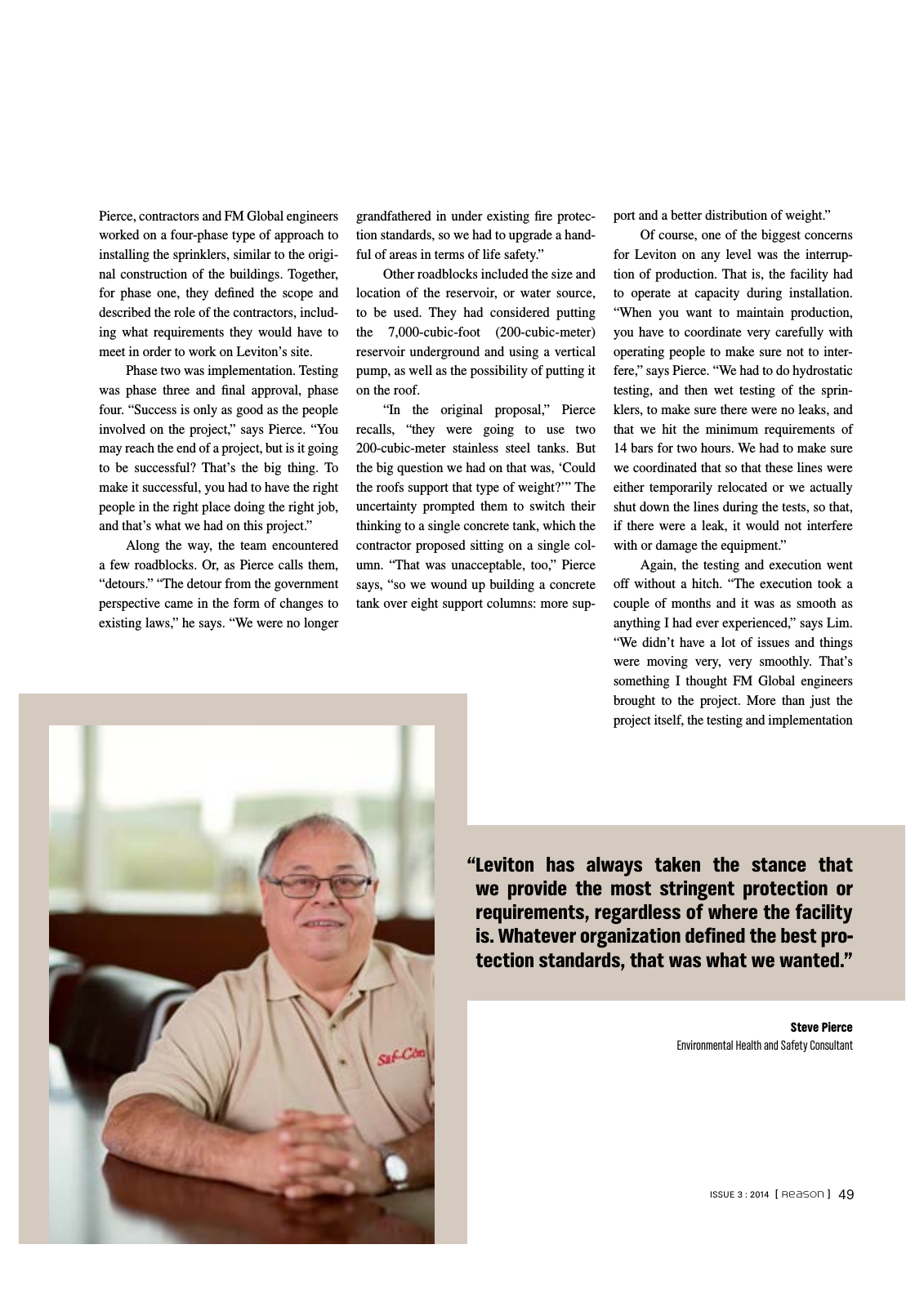Reason Magazin 2014Q3 Seite 49
Hinweis: Dies ist eine maschinenlesbare No-Flash Ansicht.Klicken Sie hier um zur Online-Version zu gelangen.
Inhalt
grandfathered in under existing fire protec tion standards so we had to upgrade a hand ful of areas in terms of life safety Other roadblocks included the size and location of the reservoir or water source to be used They had considered putting the 7 000 cubic foot 200 cubic meter reservoir underground and using a vertical pump as well as the possibility of putting it on the roof In the original proposal Pierce recalls they were going to use two 200 cubic meter stainless steel tanks But the big question we had on that was Could the roofs support that type of weight The uncertainty prompted them to switch their thinking to a single concrete tank which the contractor proposed sitting on a single col umn That was unacceptable too Pierce says so we wound up building a concrete tank over eight support columns more sup Pierce contractors and FM Global engineers worked on a four phase type of approach to installing the sprinklers similar to the origi nal construction of the buildings Together for phase one they defined the scope and described the role of the contractors includ ing what requirements they would have to meet in order to work on Leviton s site Phase two was implementation Testing was phase three and final approval phase four Success is only as good as the people involved on the project says Pierce You may reach the end of a project but is it going to be successful That s the big thing To make it successful you had to have the right people in the right place doing the right job and that s what we had on this project Along the way the team encountered a few roadblocks Or as Pierce calls them detours The detour from the government perspective came in the form of changes to existing laws he says We were no longer port and a better distribution of weight Of course one of the biggest concerns for Leviton on any level was the interrup tion of production That is the facility had to operate at capacity during installation When you want to maintain production you have to coordinate very carefully with operating people to make sure not to inter fere says Pierce We had to do hydrostatic testing and then wet testing of the sprin klers to make sure there were no leaks and that we hit the minimum requirements of 14 bars for two hours We had to make sure we coordinated that so that these lines were either temporarily relocated or we actually shut down the lines during the tests so that if there were a leak it would not interfere with or damage the equipment Again the testing and execution went off without a hitch The execution took a couple of months and it was as smooth as anything I had ever experienced says Lim We didn t have a lot of issues and things were moving very very smoothly That s something I thought FM Global engineers brought to the project More than just the project itself the testing and implementation Leviton has always taken the stance that we provide the most stringent protection or requirements regardless of where the facility is Whatever organization defined the best pro tection standards that was what we wanted Steve Pierce Environmental Health and Safety Consultant ISSUE 3 2014 Reason 49
